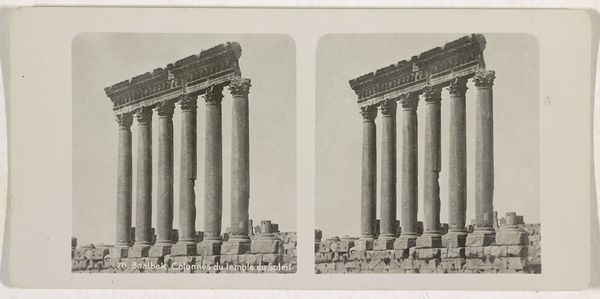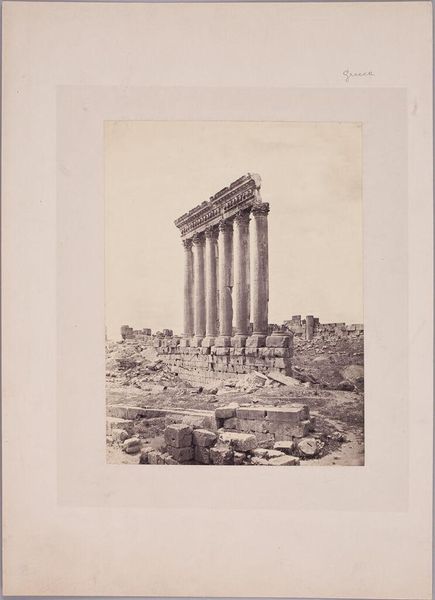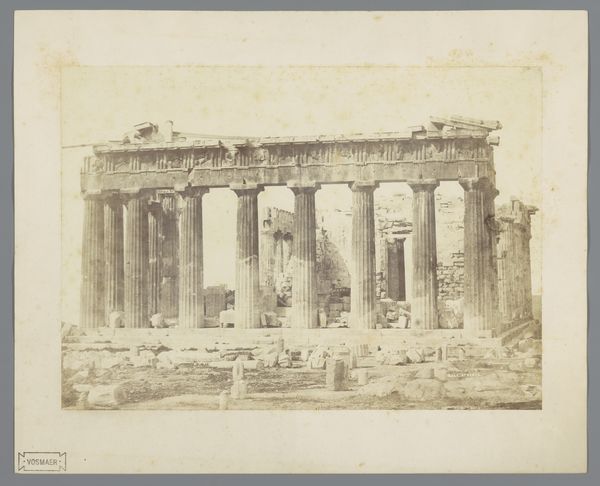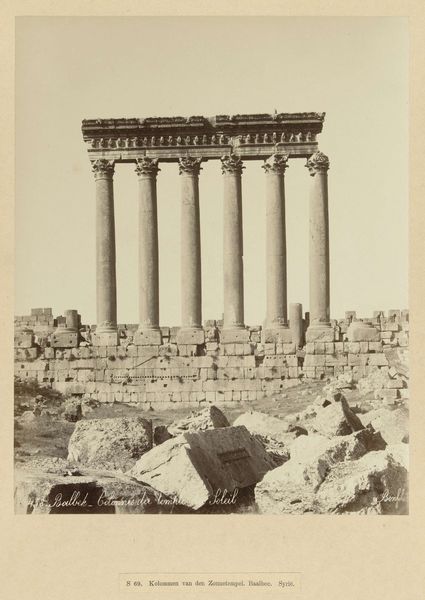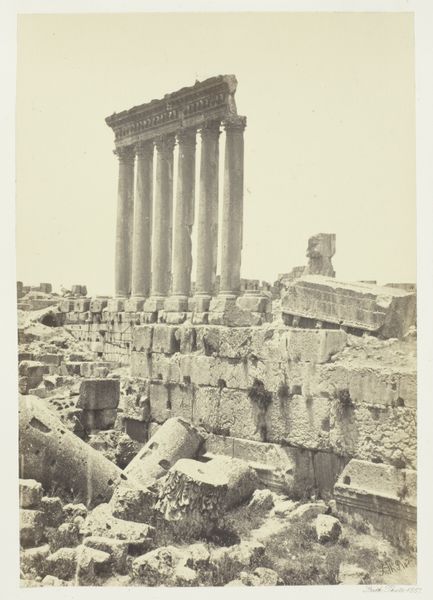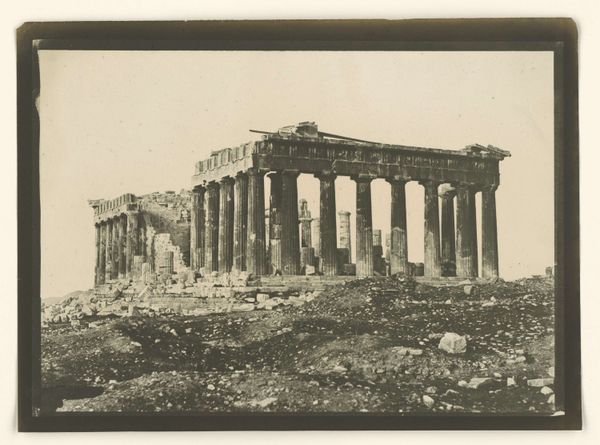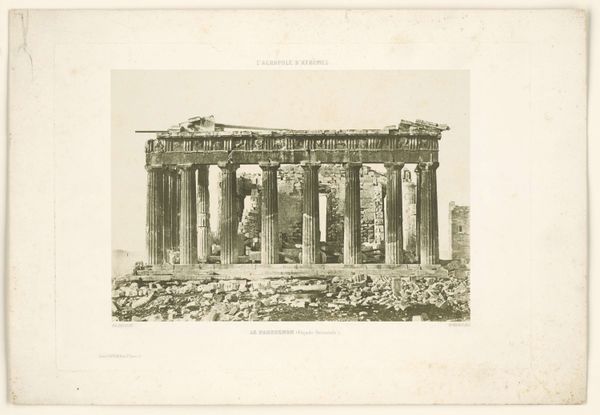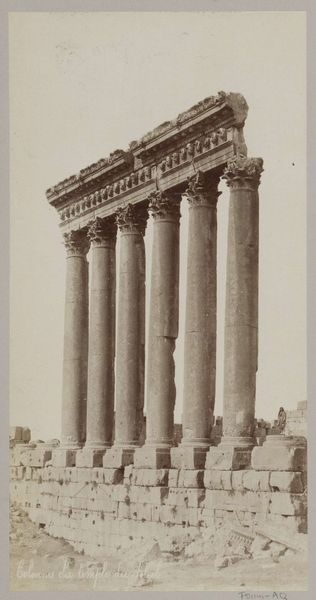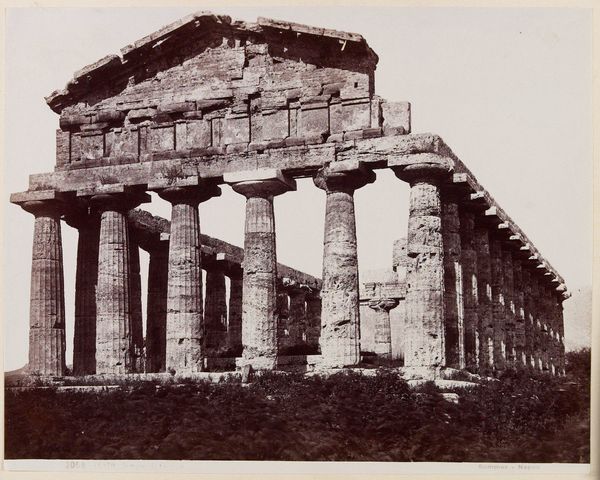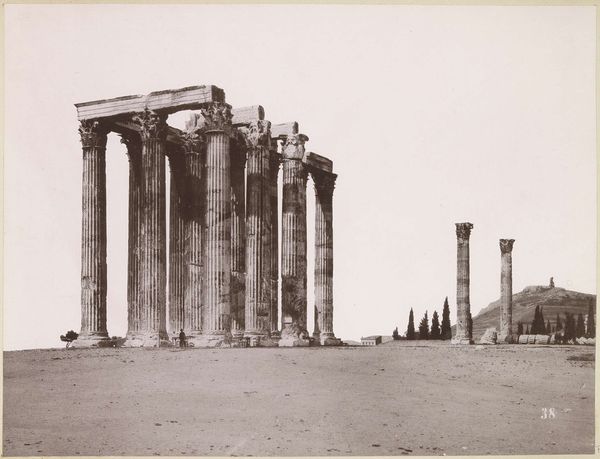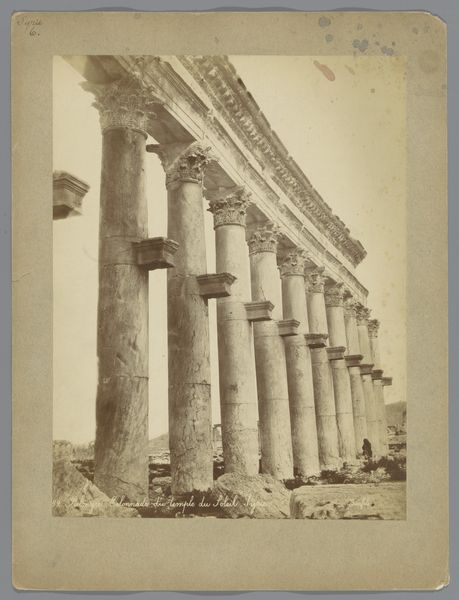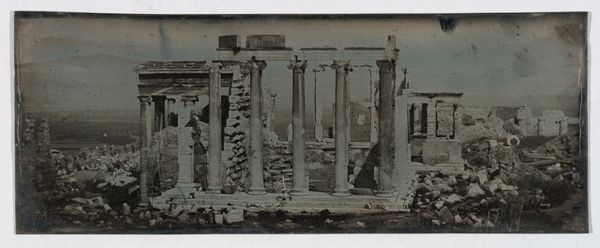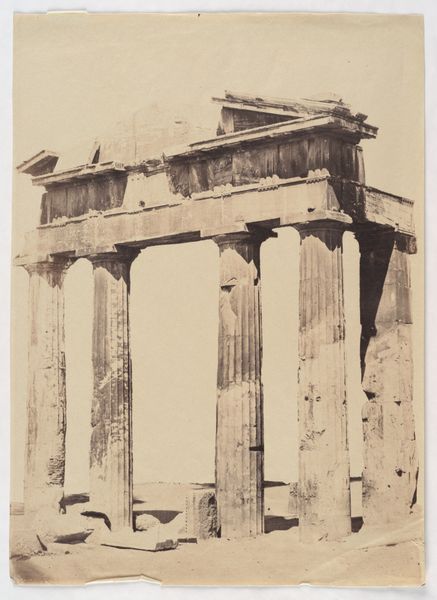
print, photography, site-specific, architecture
#
public art
# print
#
sculpture
#
memorial
#
landscape
#
classical-realism
#
photography
#
geometric
#
ancient-mediterranean
#
column
#
site-specific
#
cityscape
#
islamic-art
#
architecture
Dimensions: height 85 mm, width 170 mm
Copyright: Rijks Museum: Open Domain
This photographic image of the Temple of Jupiter in Baalbek, Lebanon, was created by Ferrier Père-Fils et Soulier. It uses the collodion process, which in the 19th century allowed for a very sharp image to be captured on a glass plate negative. You can almost feel the weight and texture of the massive stones in the temple ruins. This feeling comes through in part because of the photographer's skill, and the quality of the lens. But it’s also because of the collodion process itself. Think about how it worked. A glass plate was meticulously coated with a light-sensitive emulsion. This had to be done just before exposure, meaning that the photographer had to carry a portable darkroom. The resulting image, as you can see, is incredibly detailed. The whole procedure reflects a desire to document the world with scientific precision. The image becomes an index of place and time. This makes photography analogous to other kinds of intensive labor, like quarrying the temple stones themselves. It's a process of extraction and transformation, a way of turning the world into a commodity. Ultimately, it is through understanding the material means by which images like this came into being, that we can appreciate their power.
Comments
No comments
Be the first to comment and join the conversation on the ultimate creative platform.
